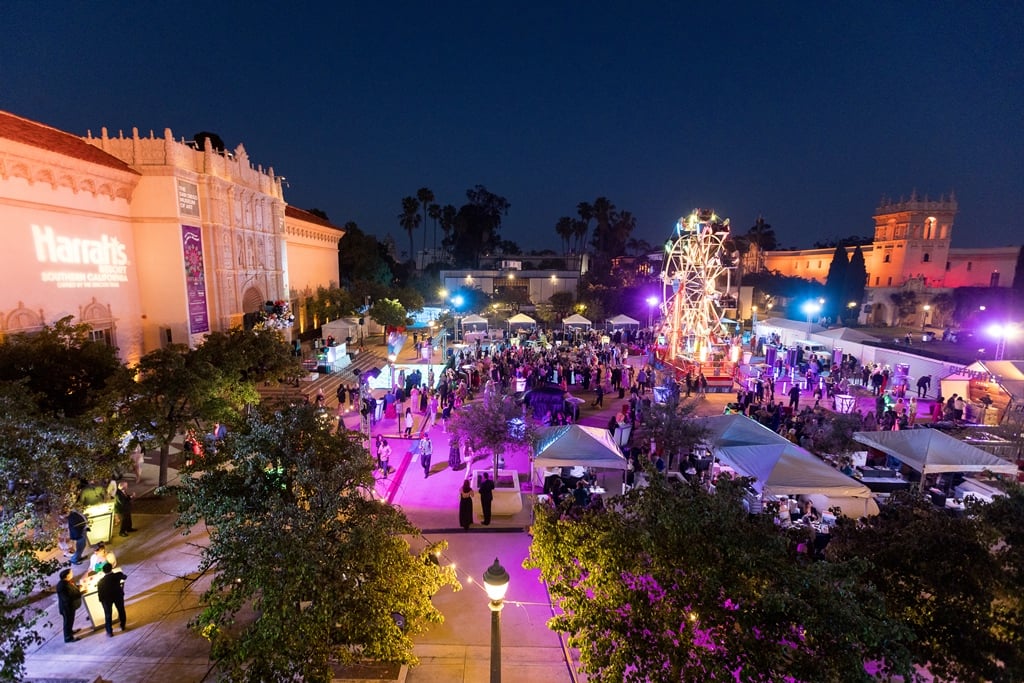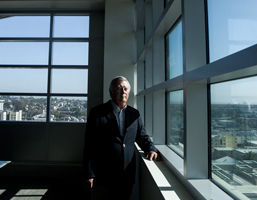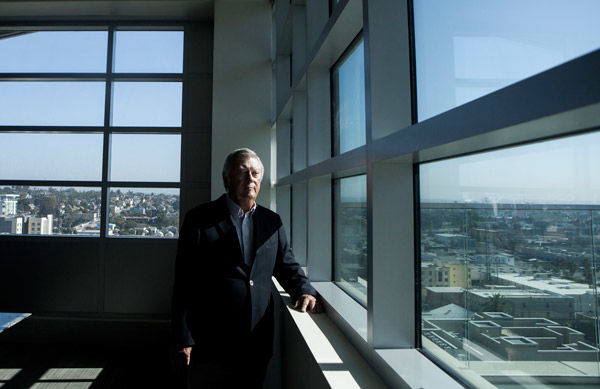
Rudy Hasl, Dean of Thomas Jefferson School of Law
Photo by Sam Hodgson
Rudy Hasl is dean of Thomas Jefferson School of Law.
The students at two well-known San Diego law schools came eager to learn everything they could about contract law, torts, and fraud. Now they are graduates, many are unemployed or underemployed, and they’re turning the tables on their alma maters.
Downtown’s Thomas Jefferson School of Law is one of several law schools defending allegations that they lied about their employment statistics to improve their rankings in U.S. News & World Report’s list of best law schools. For Thomas Jefferson, the defense goes like this:
“There is no way in hell, if I put down 100 percent employment, that would change the ranking in U.S. News,” says Rudy Hasl, the school’s dean. “There is no incentive. We’re a fourth-tier law school.”
And yet, four of Thomas Jefferson’s recent graduates sued the law school last year for $50 million, alleging that the school faked its stats. The suit is one of 15 similar complaints filed nationwide, all of which hope to be certified as class actions, including one against California Western School of Law downtown. For those keeping score at home: Two of San Diego’s three law schools face charges of fraud from their own alumni.
In essence, the complaints say that the law schools, which consistently reported graduates’ employment rates between 80 and 90 percent, lured students to take on as much as $150,000 in debt to finance their legal educations. Once they graduated, these students expected to find lucrative careers to pay off the debt. But as the economy soured, the legal profession, uncharacteristically, tanked, and these students struggled to get any kind of job, let alone jobs that required their expensive degrees. But the schools, following standards set by the American Bar Association, continued to report high employment rates, attracting ever more students.
The plaintiffs say that had they known the schools were juicing the numbers, they would never have attended law school, or, at least, not these law schools.
And now they want the schools to give them a refund.
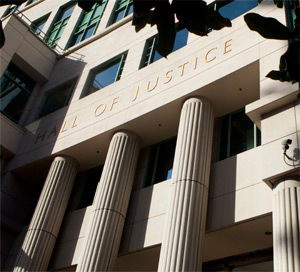
Hall of Justice
Photo by Sam Hodgson
Law school is supposed to be a ticket to job security and the upper middle class. Attorneys are often immune to the economic cycles, enjoying a solid business writing contracts during boom times and handling lawsuits when recessions strike. Jill Ballard wanted that kind of stability. (Ballard and the other plaintiffs declined to comment, citing their attorneys. The information that follows is quoted or summarized from court documents.) Ballard graduated from California State University San Marcos in 1996 and worked as a substitute teacher. She read in a 2003 copy of U.S. News and World Report that Thomas Jefferson School of Law had an employment rate of 80.1 percent for students nine months after graduation, even though its admission standards were the lowest in the region. She applied, was accepted, and enrolled.
In 2008, Ballard graduated with honors and more than $76,000 in debt, and she promptly passed the California Bar Exam on her first try.
But when Ballard went to apply for jobs, she discovered a labor market for attorneys that bore little resemblance to the one that had been the norm for the previous 50 years. A recession swept the nation in 2007 and 2008, and the halting recovery that followed didn’t leave many people much better off. The legal field couldn’t shrug off the sudden drop in billings that came when companies foundered and individuals couldn’t afford mortgage payments, let alone attorneys. Major law firms shuttered, other firms opted not to continue the usual practice of hiring their summer associates, and salaries stopped growing. It was not a good time for Ballard to be out looking for a job, and graduating from a low-ranked school like Thomas Jefferson probably didn’t help her prospects.
Ballard spent two years applying for more than 200 positions, landing none of them. She earned a combined $7,384 in 2009 and 2010, and needed food stamps to survive. She says that had she known it would be so hard to find a job—had she known she would have something less than an 80.1 percent chance of finding legal work—she would never have enrolled.

Niels Schaumann
Photo by Sam Hodgson
The system for reporting employment statistics relies entirely on the law schools themselves. School staff members interview students immediately upon graduation and then again nine months later to check on their employment status. In 2005 and 2006, Cal Western had an employment rate of 90 and 93 percent. Five years later, when the bottom had fallen out of the job market, the school’s employment rates dipped marginally, to 89 percent. Thomas Jefferson’s employment rates actually improved, from 80.1 percent to 90 percent over the same period.
How does that happen?
The legal complaints accuse the schools of outright fraud, lying to inflate their numbers. In one particularly surprising observation, attorneys Brian Procel and Vinay Kohli, who work at Miller Barondess LLP in LA, cite Thomas Jefferson’s survey of 2006 graduates. It appears to reflect a correlation between a student’s last name and his or her employment status. Students whose last name began with letters A through N were all shown as employed, students whose last names began with S and T were studying for the bar, and students with a W-name were unemployed. The complaint doesn’t address the missing letters. Thomas Jefferson has since said that list was an error, but it’s the sort of mistake that gets litigious attorneys fired up.
Perhaps more amazing are the ways in which the American Bar Association allowed schools to report.
Karen Grant, a former assistant director for career services for Thomas Jefferson, testified in an affidavit that when she worked at the school, she keenly felt pressure from her boss, Laura Weseley, the school’s Director of Career Services at the time, to show increasing employment rates. Among her duties, Grant surveyed students nine months after graduation to learn their employment status. If a graduate said she or he was unemployed, Grant was to push and ask if the student had been employed at any time after graduation. If the graduate said yes, Grant was to mark them as employed.
“I again expressed my concern to Ms. Weseley that it did not seem right to report currently unemployed students as ‘employed’ merely because they had been employed at some point after graduation. Ms. Weseley responded by saying, ‘It’s no big deal, everybody does it,’” said Grant in a signed declaration.
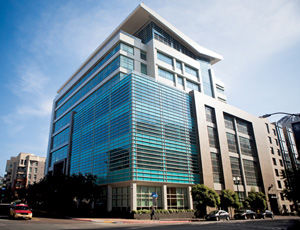
Thomas Jefferson School of Law
Photo by Sam Hodgson
Thomas Jefferson says it will produce other career services workers to contest Grant’s story, but it also said Grant’s instructions—reporting anyone with any employment at all—were standard industry practice.
Some schools, including Cal Western, will give students jobs in the administration at the school in order to report them as employed, according to the complaint. The ABA allowed schools to report their students as employed even if their work does not require a law degree.
“So the criticism is not about what Thomas Jefferson did, or Cal Western or any other law school, but really that the ABA didn’t require more intensive reporting of the kinds of positions that people were getting upon graduating from law school,” says Jefferson’s Hasl.
“That was just extremely misleading,” said Paul Campos, a law professor at the University of Colorado Law School in Boulder. As a blogger at insidethelawschoolscam.blogspot.com, Campos has been at the forefront of the movement to demand that law schools provide more accurate employment stats.
“People would look at these statistics and see 90 percent of graduates had some job. A very large percentage of these jobs were not legal jobs. These were jobs they could have gotten without going to law school,” he says.
Campos offered a counter-argument to Hasl’s assertion that low-ranked law schools have no incentive to lie about their statistics. The name of the game isn’t getting highly ranked: It’s admitting as many students as possible, at as high a tuition rate as possible.
“The fact that Thomas Jefferson has admitted a student means he or she can borrow 100 percent of all the tuition costs, as calculated by Thomas Jefferson, straight from the federal government,” he says. “No one ever asks if this loan is going to be paid back.”
Nationwide, law school tuitions rose 317 percent between 2005 and 2011. Both Cal Western and Thomas Jefferson charge around $40,000 a year for tuition. Students at Cal Western graduate with an average of $145,000 in debt, according to U.S. News.
At the same time that tuition rose and law jobs evaporated, both Cal Western and Thomas Jefferson increased their class sizes, by 19 and 15 percent, respectively.
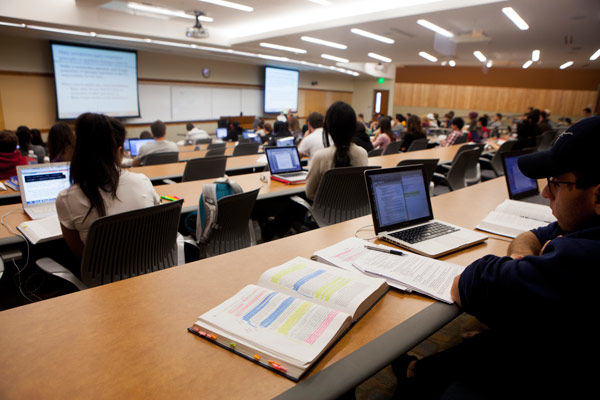
Thomas Jefferson School of Law classroom
Photo by Sam Hodgson
The employment numbers make up 18 percent of the U.S. News formula for determining law school rankings. At that amount, any inflation happening would only have a modest effect on any school’s ranking. Hasl says it would only be useful for a school “on the cusp” of moving up to tier 2 or 3 (Law school tiers are ill-defined, and there’s an oft-repeated joke that says there are 15 top-10 law schools).
It’s also not clear whether students actually make decisions based on the ranking or the statistics alone. Do they matter all that much?
“Not really, because I came here,” says Jessica McCracken, a first-year student.
At Thomas Jefferson’s new $66-million campus building in downtown San Diego, McCracken says she chose this school because its location was convenient (she’s from Los Angeles), and because of the new campus.
Other students make similar remarks: One attended thanks to a scholarship; another had a job already in San Diego and it’s convenient to attend part-time. Of a dozen or so students surveyed, none said they relied on U.S. News or any one statistic to choose Thomas Jefferson over another school. And most took a dim view of the alumni suing their alma mater.
“It’s tough for everyone,” says Jason Ging, a first-year student. “If you put the legwork in, you can get a job.”
Some students have nothing but scorn for students who feel deceived by a single statistic.
“If you can’t figure that out on your own, who would want to have you as their lawyer?” says Nicholas Williams, another law student.
Both Hasl and Niels Schau-mann, the newly appointed dean of Cal Western, maintain they launched internal investigations into the allegations of fraud and found no evidence of it.
“I think that no one here, to my knowledge, would ever do such a thing,” Schaumann says. “It violates all the principles and values for which the law school stands.”
Hasl, as noted earlier, doesn’t see any point to lying about the statistics, which is part of why he thinks it didn’t happen.
Of the 15 cases nationwide, five were dismissed by judges, some on the grounds that applicants to law schools are sophisticated consumers and should have known these employment statistics were implausible.
In one of its motions, Thomas Jefferson argues that applicants should have known not all the graduates with jobs were becoming lawyers.
“For all relevant years, bar passage rate at TJSL was lower (and often significantly lower) than the reported percent employed nine months after graduation,” the motion reads. “Because bar admission is a prerequisite to practicing law, any reasonable reader would immediately recognize that that USNWR (U.S. News & World Report) employment figures must include non-lawyer positions.”
Yet that argument didn’t seem to carry much weight with Superior Court Judge Joel Pressman. In November, Pressman rejected Thomas Jefferson’s motion to dismiss, making it the first of the alumni suits against law schools to go to trial. The next hearing will be held on March 22.
But whatever happens with any of the cases, the complaints and surrounding media coverage have already had an effect. The American Bar Association tightened up its reporting requirements for the most recent classes. Cal Western’s class of 2011 had a total employment rate of 87 percent among those who could be found for the survey, and 68 percent had jobs that required passing the bar. Thomas Jefferson’s class of 2011 fared worse: 68 percent had jobs of any kind, and 42 percent had jobs that required bar passage.
The bad publicity has hurt law schools. Prospective students weighing the debt and odds of landing a job have stopped applying. This fall, for the first time, the number of applications to law schools nationwide dropped.
For Cal Western’s Schaumann, the reputation problem is the greater hill to climb. “One of the things I find troubling is the allegation seems to be credible to so many people, which makes me wonder about the way law schools are viewed in this society,” he says. “I think the most important thing for law schools to do right now, aside from defending against the case, is to pay attention to what the case is telling us. We’re not doing a good enough job preparing students for the practice of law.”






